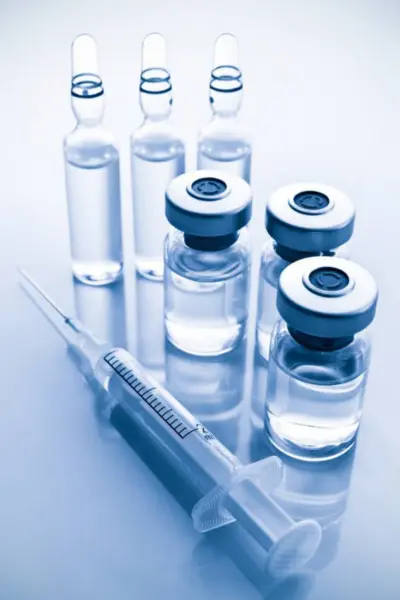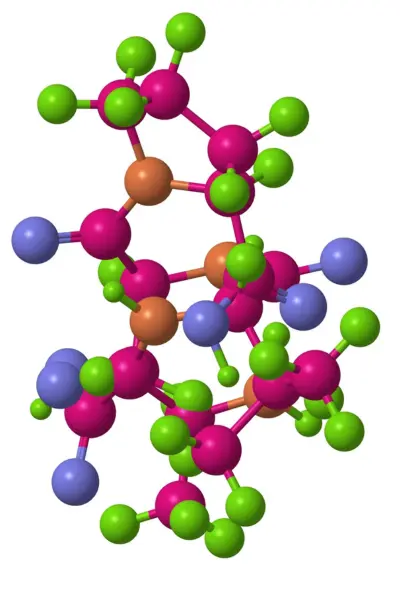PROMO!
First order? Get 10% OFF with this code: 1storder
Peptides are chains of amino acids linked by peptide bonds. They form the bridge between simple amino acids and complex proteins, the building blocks of proteins. Most peptides contain between two and fifty amino acids. This compact size allows them to fold into defined shapes and interact precisely with other molecules inside the body.
Each peptide’s sequence of amino acids determines its structure and biological role. These sequences control how peptides interact with enzymes, receptors, and other biomolecules. Because of this precision, peptides regulate essential processes such as metabolism, the immune system, joint health and tissue regeneration.
In the body, the effects of peptides are seen in how they influence metabolism, cell growth, and communication between organs. A single change in an amino acid sequence can transform how a peptide behaves turning one into a hormone modulator, another into an antimicrobial agent, or another into a cellular repair signal.
Researchers use peptides to study how molecular structure controls biological activity. Through solid-phase peptide synthesis (SPPS), scientists can design peptides identical to natural ones or modify their sequences to explore new functions. This use of peptides helps researchers investigate receptor binding, enzyme behavior and molecular communication under reproducible conditions.
Peptides remain central to modern biology and biochemistry. Their structure and function reveal how the body maintains balance, repairs damage and coordinates cellular activity at the molecular level key to understanding the benefits of peptides.
Before exploring how peptides are categorized and applied, it’s essential to understand how they actually work inside the body.


Peptides act as molecular messengers that carry information between cells. Each peptide has a unique sequence and shape that allows it to connect with a specific receptor on a cell surface. When a peptide binds to its receptor, it sends a signal that activates or blocks a biological process.
Such processes include hormone release, enzyme activity, or gene expression. This selective interaction maintains the accuracy of peptide signaling. A peptide generally binds to its preferred receptors, producing targeted effects while minimizing side effects on unrelated systems. This selectivity helps the body maintain proper control over metabolism, blood pressure, and tissue health.
For example, insulin signals cells to absorb glucose and maintain blood sugar balance. Growth hormone–releasing peptides (GHRPs), acting through the pituitary gland, activate hormone secretion and boost muscle growth and recovery. Collagen peptides support connective tissues, promote tissue structure and reinforce the skin barrier to protect against sun damage and fine lines. Each peptide performs a defined role that contributes to balance and repair.
Scientists often create synthetic peptides to study these processes in the lab. By altering amino acid sequences, they can test how structure affects function and observe changes in receptor binding. These studies provide insight into how peptides maintain homeostasis and regulate biological systems throughout the body.
Peptides vary by size, shape, and function. These differences define the main peptide families researchers study, each with unique key roles in the body.
Researchers classify peptides by their structure, size and biological function. Each category contributes to understanding specific molecular behaviors and applications.
Oligopeptides: Oligopeptides contain two to twenty amino acids. They manage short-range signaling and localized regulation within tissues. Researchers use them to explore how cells communicate over small distances.
Polypeptides: Polypeptides are longer chains that can range from dozens to hundreds of amino acids. When a chain exceeds about 50 residues and folds into a stable three-dimensional structure, it is generally considered a protein. Their research value lies in studying hormone regulation, immune response, and enzyme control.
Bioactive Peptides: Bioactive peptides display specific biological actions, such as antioxidant, antimicrobial, or antihypertensive activity. Scientists study them for potential roles in therapeutic and nutritional applications.
Neuropeptides: Neuropeptides transmit signals in the nervous system. They regulate mood, pain response, and appetite, making them key subjects in neuroscience and behavioral research, especially in studies related to severe chronic pain.
Antimicrobial Peptides (AMPs): AMPs form part of the body’s innate immune defense. They protect against bacteria, fungi and viruses by damaging microbial membranes. These peptides are being explored as next-generation alternatives to traditional antibiotics.
Synthetic Peptides: Synthetic peptides are created through SPPS or related techniques. Researchers use them to mimic or modify natural peptides in controlled experiments. Their precision and reproducibility make them essential tools for studying receptor binding, drug design and molecular interactions.
Understanding these categories sets the stage for exploring how different peptides are used to study biological processes and their potential benefits across scientific fields.

Research peptides help scientists understand biological mechanisms with accuracy and reproducibility. Their clear structure and specific functions make them central to studies in biochemistry, molecular biology, and medicine.
Muscle Growth and Recovery
Peptides such as GHRPs and insulin-like growth factors (IGFs) play major roles in muscle repair, growth and protein synthesis. Research in this area deepens understanding of tissue regeneration and recovery after stress or injury.
Skin Health and Regeneration
Collagen-based peptides and signal peptides are used to study skin elasticity, wound healing and extracellular matrix remodeling. They provide insight into how the body repairs and renews tissues as it ages.
Metabolic Function and Regulation
Peptides related to insulin, leptin, and ghrelin signaling help researchers study energy balance, appetite control, and glucose metabolism, which are closely linked to weight loss. Their selective action allows detailed observation of endocrine feedback and metabolic health.
Performance and Recovery Research
Compounds such as BPC-157 and TB-500 are evaluated for their effects on inflammation control, angiogenesis, and muscle recovery. These peptides help explain the molecular basis of healing and adaptation in physical performance and bone loss prevention.
Medical and Therapeutic Development
Peptides serve as a foundation for developing new treatments. Researchers study peptide–drug conjugates, peptide-based vaccines, and cancer immunotherapies for their high precision and low toxicity.
Cosmetic and Regenerative Science
Peptides such as copper peptides, matrixyl derivatives, and keratinocyte growth factors (KGFs) are being studied for their effects on collagen production, skin firmness and hair growth. These findings contribute to research in dermatology and non-invasive regenerative care.
These applications show that peptides influence nearly every area of molecular science and play a vital role in modern research and innovation.
Peptides connect chemistry, biology, and medicine in modern science. Their predictable structure and targeted behavior make them powerful tools for exploring how cells communicate and how diseases develop.
Scientists use peptides to study enzyme activity, receptor signaling and molecular communication. Their reproducibility and flexibility allow researchers to model complex biological processes accurately.
This versatility supports breakthroughs in oncology, regenerative medicine, metabolic science and neurology. Peptides help researchers design new drugs, refine diagnostic tools and develop advanced biomaterials. By studying peptide behavior, scientists gain insight into how to control biological responses and design precise, effective therapies.
As this research expands, reliable access to high-quality materials becomes crucial. That’s where Peptide Works plays a vital role in supporting global scientific progress, delivering research-grade peptides across the United States and to laboratories worldwide.
Peptide Works supplies high-purity, research-grade peptides to laboratories, universities, and professional research teams worldwide. Each peptide undergoes strict quality control and analytical testing to ensure consistent purity, stability and performance.
We focus on supporting scientific discovery through reliable, reproducible materials that meet the highest research standards. Our products are developed to help scientists study, innovate, and achieve precise results in molecular biology, biochemistry, and pharmaceutical research.
At Peptide Works, progress in peptide science begins with accuracy, consistency, and trust. We’re committed to advancing global research by providing dependable materials for those shaping the future of science.
ALL CONTENT AND PRODUCT INFORMATION AVAILABLE ON THIS WEBSITE IS FOR EDUCATIONAL PURPOSES ONLY.
DISCLAIMER: These products are intended solely as a research chemical only. This classification allows for their use only for {name} research development and laboratory studies. The information available on our Peptide Works website: https://peptide-works.com/ is provided for educational purposes only. These products are not for human or animal use or consumption in any manner. Handling of these products should be limited to suitably qualified professionals. They are not to be classified as a drug, food, cosmetic, or medicinal product and must not be mislabelled or used as such.